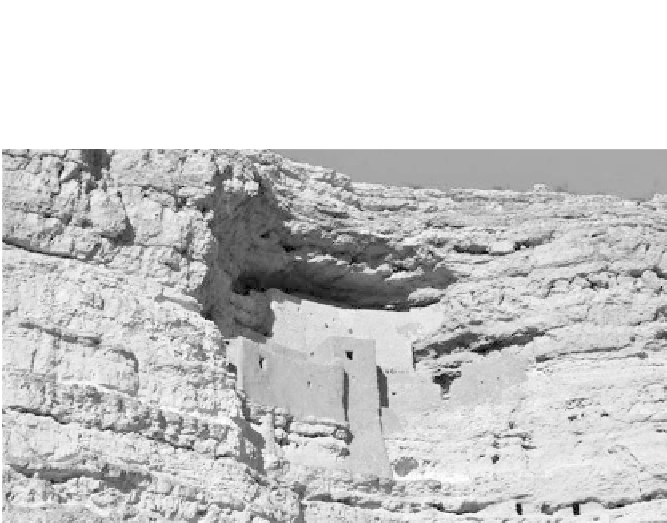Geoscience Reference
In-Depth Information
f igu r e 22 . Montezuma's Castle, a clif dwelling located just north of Camp Verde in
central Arizona. (Photo by B. Lynn Ingram.)
Another culture, the ancient Sinagua (which translates to “without
water”), l ourished farther to the north in Arizona, in the region between
Phoenix and Flagstaf today. h e Sinagua initially controlled water for
their crops using check dams—small walls built of stone across ephemeral
streams—and irrigation ditches. Over time, sediment and water accumu-
lated behind these dams, providing fertile soil for planting crops. h e Sinagua
built storage reservoirs for domestic uses of water, such as washing, cooking,
pottery making, and drinking. h ey also took advantage of natural water
reservoirs, thriving in an arid environment for a thousand years. h ey built
clif dwellings near Camp Verde, Arizona (such as Montezuma's Castle),
which suggests that, as resources became scarce, they were forced to build
fortii ed dwellings with hidden food storage areas to protect their meager
supplies (see i gure 22). h e Sinagua also disappeared very suddenly, at about
the same time as the Hohokam.
Looking closely at the demise of these ancient civilizations, we i nd many
similarities. In particular, all of these societies were l ourishing prior to a
rather abrupt collapse. h e archaeological record of the last decades of the
Ancestral Pueblo in Chaco Canyon abounds with evidence of suf ering:
skeletal remains show signs of malnutrition, starvation, and disease; life
spans declined; and infant mortality rates soared. Chilling stories of vio-
lence, possibly warfare, were told by mass graves containing bones penetrated
with arrowheads and teeth marks and skulls bearing the scars of scalping.




























